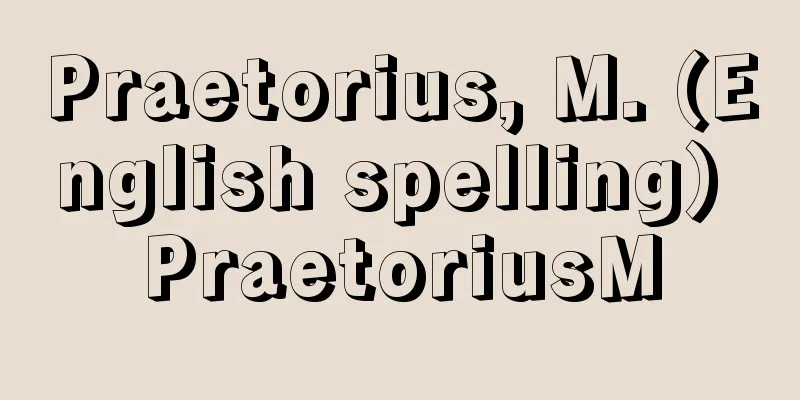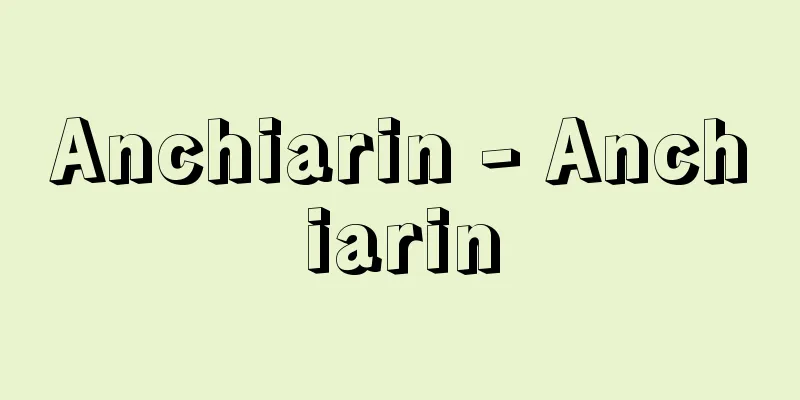Praetorius, M. (English spelling) PraetoriusM

|
…In the field of instrumental music, Arnolt Schlick (before 1460-after 1521) and Hofheimer paved the way for organ music in Germany, while Hans Judenkünig (c. 1450-1526) and Hans Neusidler (before 1510-63) developed lute music. At the end of the Renaissance, Hans Leo Hassler (1564-1612) and Michael Praetorius (1571-1621) introduced the new Venetian polyphonic style into Germany. During the Renaissance, German music learned much from the advanced polyphony of Flanders and the brilliant world of acoustics of Italy. … From [Motet]...Josquin des Prez, Palestrina, and Lassus are representative of this style, and Lassus alone left behind as many as 1,200 compositions. On the other hand, in Venice in northern Italy, a complex singing style of motet was born, represented by G. Gabrieli, and its influence extended to Germany (Michael Praetorius (1571-1621) and others). The motet of the Baroque period continued the choral style of the Renaissance in one respect (JJ Fuchs, JS Bach, and others), but also gave rise to cantata-style works for solo and choral voices, supported by a basso continuo and accompanied by instruments and orchestras playing obbligato melodies (Schütz's Symphonie Sacrée). ... From [Renaissance Music]...Madrigas reached their peak under the works of Marenzio, Gesualdo, and Monteverdi, while lighter secular songs such as the villanella, canzonetta, and baretto also became popular. In Germany, the international style was introduced by Lassus and others, while the rise of Protestant music led to the development of unique styles, such as Ludwig Senfl (c. 1486-c. 1542), Hans Leo Hassler (1564-1612), and Michael Praetorius (1571-1621). In Spain, a distinctive national style was established by Cristóbal de Morales (c. 1500-53) and Victoria, and in the field of instrumental music, vihuela music became popular. ... *Some of the terminology that mentions "Praetorius, M." is listed below. Source | Heibonsha World Encyclopedia 2nd Edition | Information |
|
…器楽の面ではシュリックArnolt Schlick(1460以前‐1521以後)や前述のホーフハイマーらがドイツのオルガン音楽に道を開き,またユーデンキュニヒHans Judenkünig(1450ころ‐1526),ノイジードラーHans Neusidler(1510以前‐63)らがリュート音楽を発展させた。ルネサンス末期にはハスラーHans Leo Hassler(1564‐1612),プレトリウスMichael Praetorius(1571‐1621)らによって,新しくベネチアの複合唱様式の音楽がドイツに導入された。ルネサンス時代には,ドイツ音楽はフランドルの高度の多声技法とイタリアの輝かしい音響効果の世界から多くのものを学び取った。… 【モテット】より…ジョスカン・デ・プレ,パレストリーナ,ラッススらがその代表者であり,とくにラッススは一人で1200曲もの作品を残している。他方,北イタリアのベネチアでは,G.ガブリエリを代表者とする複合唱様式のモテットが起こり,その影響はドイツにも及んだ(プレトリウスMichael Praetorius(1571‐1621)ら)。 バロック時代のモテットは,一面ではルネサンスの合唱様式を継続するとともに(J.J.フックス,J.S.バッハら),通奏低音に支えられ,オブリガートの旋律を奏する楽器や管弦楽を伴う独唱,重唱のカンタータ風の作品も現れた(シュッツの《シンフォニエ・サクレ》)。… 【ルネサンス音楽】より…マドリガーレはマレンツィオ,ジェズアルド,モンテベルディらの手によって最盛期を迎える一方,ビラネッラ,カンツォネッタ,バレットなどのより軽快な世俗歌曲も人気を集めた。ドイツではラッススらの手で国際的様式が導入され,一方プロテスタント音楽の勃興により独特の様式が開拓され,ゼンフルLudwig Senfl(1486ころ‐1542ころ),ハスラーHans Leo Hassler(1564‐1612),プレトリウスMichael Praetorius(1571‐1621)らが活躍した。スペインではモラーレスCristóbal de Morales(1500ころ‐53)やビクトリアによって個性ある国民様式が確立し,器楽の分野ではビウェーラ音楽が人気を集めた。… ※「Praetorius,M.」について言及している用語解説の一部を掲載しています。 出典|株式会社平凡社世界大百科事典 第2版について | 情報 |
<<: Praetorius, J. (English spelling) PraetoriusJ
Recommend
Emporium - Emporium
…Such markets were the agora and forums of the an...
Osado Mountains - Osadosanchi
The landform mountain range occupies the northern...
Financial oligarchy
... "The accumulation of production, the mon...
Police state - English spelling: police state
In general, it refers to monarchical states that ...
Jehol
...Emperors stayed here every year from May to Se...
Timarete
... The closely related Cirratulus cirratus has a...
Karl XII - Karl
King of Sweden (reigned 1697-1718). In 1700, he st...
autumn crocus
...The following spring, it grows leaves like sta...
Oriental particolored bat
A general term for mammals in the family Vespertil...
Anglo‐Irish
The term refers to an Englishman born in Ireland, ...
Wenseki - Wenseki
...Boundary marking devices similar to shimenawa ...
Elsner, JAF (English spelling) ElsnerJAF
… [Romanticism period] In the 19th century, Polis...
Alternanthera ficoidea
A perennial plant of the genus Alternanthera in th...
Cistus villosus
…[Kazuo Furusato]. … *Some of the terminology tha...
Hecker, F.
...The Baden Constitution had some more advanced ...









